A Corona Virus Waver Was Required!
The Corona Virus Waver is required! Buyers or the buyers representative must contact the seller or the sellers representative and see if the home is available for in person showings and if so what is required before it can be seen. Don’t assume as a qualified buyer you can see every house on the market now. Many sellers aren’t allowing any in-person showings until an acceptable offer is submitted first.
Two new forms to keep clients and Realtors safe, while at the same time keeping home sales moving.
The COVID-19 pandemic, commonly referred to as the Corona Virus, has drastically altered how the real estate market operates, especially concerning in-person home showings. Sellers are now implementing strict measures to protect themselves from potential exposure to the Corona Virus, as well as from legal liability in case someone contracts it while touring their home. One such measure that has become increasingly common is requiring buyers to sign a “Coronavirus Property Entry Advisory and Declaration (PEAD)” before they are allowed to view a property. This form acts as a waiver, informing buyers of the risks associated with the Corona Virus and in-person home tours, and it aims to protect sellers from any lawsuits that might arise if a buyer were to become infected. Given the contagious nature of the Corona Virus, this document serves as an essential legal safeguard for sellers who want to protect themselves while still moving forward with the sale of their property.
In addition to requiring the PEAD form, many sellers are proactively taking further precautions to reduce the risk of Corona Virus transmission. One such step is asking potential buyers to verify that they are financially qualified to purchase the home before scheduling an in-person showing. By requiring proof of financial pre-qualification, sellers can ensure that only serious buyers, who are truly interested and capable of purchasing the home, are allowed to enter the property. This limits unnecessary exposure to the Corona Virus, as it reduces the number of people visiting the home. Since the Corona Virus can be transmitted through surface contact, as well as airborne particles, it’s important to minimize the number of showings and keep in-person interactions to only those that are essential. Sellers are rightfully concerned about the potential risks associated with the Corona Virus, and by restricting showings to pre-qualified buyers, they can protect both themselves and their homes from unnecessary exposure.
While these new requirements might seem inconvenient for some buyers, they are necessary precautions in light of the ongoing threat posed by the Corona Virus. Buyers who are unwilling to sign the PEAD form or provide proof of financial qualification may find it more challenging to schedule a showing, but this is a small price to pay for safety during these uncertain times. Sellers are justified in taking these steps to safeguard themselves, their families, and their homes from the Corona Virus. The pandemic has introduced unprecedented levels of risk, and everyone involved in the real estate process—buyers, sellers, and agents—must be flexible and willing to adapt to new procedures. The rise of the Corona Virus has shifted the way society views health and safety, and the real estate industry is no exception. These extra layers of protection are a direct reflection of the heightened concern surrounding the virus.
From a buyer’s perspective, it’s crucial to approach the home-buying process with a deep sense of caution and responsibility, especially in the age of the Corona Virus. Buyers need to use their best judgment when deciding whether or not to tour a home in person. If a buyer has been exposed to the Corona Virus or is feeling unwell, it is vital to reschedule the showing for a later date to avoid putting others at risk. Many real estate agents are now offering virtual tours and digital walkthroughs as an alternative to in-person showings, which allows buyers to narrow down their choices without the potential risks associated with the Corona Virus. These digital solutions have proven to be invaluable during the pandemic, helping buyers continue their search for a home while limiting their exposure to the virus.
Buyers and sellers alike must acknowledge that allowing home showings during the pandemic comes with significant risks due to the Corona Virus. Although the real estate market has adapted to this new normal with technological advancements like virtual tours and remote transactions, in-person showings are still a crucial part of the process for many buyers. However, these showings should not be taken lightly given the dangers posed by the Corona Virus. It is important for everyone involved to be serious about following safety protocols. Simple measures like wearing masks, using hand sanitizer, and maintaining proper social distancing can greatly reduce the risk of spreading the Corona Virus during a home showing. For sellers, it is also wise to thoroughly clean and disinfect their home after each showing to further minimize the chance of Corona Virus transmission.
In conclusion, the ongoing threat of the Corona Virus has led to significant changes in how homes are shown to potential buyers. Sellers are now requiring buyers to sign the PEAD form as a precaution against legal liability, and many are also requesting proof of financial qualification before allowing in-person showings. These steps help protect sellers from the risks associated with the Corona Virus while ensuring that only serious buyers tour their homes. Buyers, in turn, must exercise caution and prioritize safety as they navigate the home-buying process during this pandemic. With the Corona Virus still posing a threat, it is crucial for both buyers and sellers to take every precaution possible to ensure their safety. By doing so, the real estate process can continue moving forward while minimizing the health risks posed by the Corona Virus.
Contact Us For More Information.
